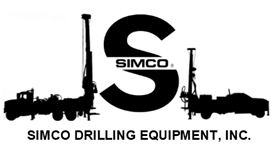A water well, geothermal or geotechnical drilling site can pose many hazards to the onsite crew. Wearing proper personal protection equipment (PPE) can mean the difference between a minor or major injury or even life or death. Our Safety Series has previously talked about hard hats – their proper use and care, as well as what and how they protect crews on site. This installment will cover the importance of protecting your hands and choosing the right gloves to keep your crew safe.

Hand injuries remain the second-most common workplace injury. When gloves fit poorly and make it harder to perform the job, workers may be tempted to remove the gloves “for just second.” But it’s in this “second” that injuries can occur. Depending on the work site, injuries can include cuts and scrapes, burns from friction or overheating of drill rods and casings, crushing injuries or severed fingers or whole hands. No matter if it’s minor or catastrophic, any injury can be avoided by using the proper PPE.
Each job site carries with it specific dangers and there is no one pair of gloves that is right for all of them. It is essential to assess each site to determine what hazards exist and how best to protect your crew.
- Fabric/Cotton – these gloves can offer protection from minor abrasions and can keep hands clean, but don’t offer protection against chemicals or sharp objects. Some fabric gloves will be coated or lined, and can protect against moderate chemicals
- Synthetic/Rubber/Plastic – when working with solvents, oils or other chemicals or using them for cleaning equipment, these types of gloves can offer protection from irritation and burns as well as absorption of the chemical through the skin
- Leather – can protect against welding sparks, minor cuts and abrasions, and can provide some protection from cold
- Kevlar – resistant to punctures, cuts and abrasions and are usually form-fitting and more comfortable than other gloves
When selecting the right gloves to protect your crew, OSHA recommends evaluating each job site independently. One type of glove won’t protect from all possible hazards on the job site. It’s essential to assess the potential dangers, temperature extremes, necessary fit and comfort for the job to be done when equipping your team with the right PPE.



